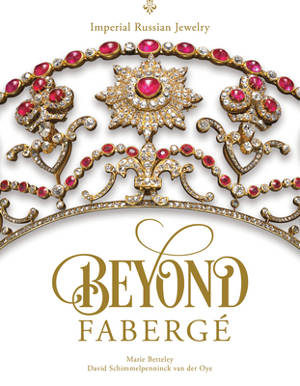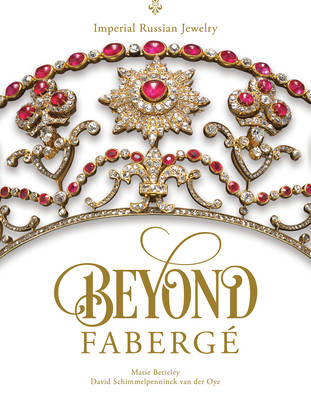
- Afhalen na 1 uur in een winkel met voorraad
- Gratis thuislevering in België vanaf € 30
- Ruim aanbod met 7 miljoen producten
- Afhalen na 1 uur in een winkel met voorraad
- Gratis thuislevering in België vanaf € 30
- Ruim aanbod met 7 miljoen producten
Zoeken
Beyond Fabergé
Imperial Russian Jewelry
Marie Betteley, David Schimmelpenninck Van Der Oye
Hardcover | Engels
€ 102,45
+ 204 punten
Omschrijving
A rare look at the exquisite world of Russian treasures that lies beyond Fabergé. Imperial Russia evokes images of a vanished court's unparalleled splendor: magnificent tiaras, gem-encrusted necklaces, snuffboxes, and other diamond-studded baubles of the tsars and tsarinas. During that time, jewelry symbolized power and wealth, and no one knew this better than the Romanovs. The era marked the high point of the Russian jewelers' art. Beginning with Catherine I's reign in 1725, in the century when women ruled Russia, until the Russian Revolution of 1917, the imperial capital's goldsmiths perfected their craft, and soon the quality of Russia's jewelry equaled, if not surpassed, the best that Europe's capitals could offer. Who created these jewels that helped make the Russian court the richest in Europe? Hint: it wasn't Carl Fabergé. This is the first systematic survey in any language of all the leading jewelers and silver masters of imperial Russia. The authors skillfully unfold for us the lives, histories, creations, and makers' marks of the artisans whose jewels and silver masterworks bedazzled the tsars. The previously unheralded names include Pauzié, Bolin, Hahn, Koechli, Seftigen, Marshak, Morozov, Nicholls & Plincke, Grachev, Sazikov, and many others. The market for these exquisite masterworks is also explored, from its beginnings to today's auction world and collector demand. More than 600 stunning photos reacquaint the world with the master artisans and their creations.
Specificaties
Betrokkenen
- Auteur(s):
- Uitgeverij:
Inhoud
- Aantal bladzijden:
- 384
- Taal:
- Engels
Eigenschappen
- Productcode (EAN):
- 9780764360435
- Verschijningsdatum:
- 8/12/2020
- Uitvoering:
- Hardcover
- Formaat:
- Genaaid
- Afmetingen:
- 221 mm x 284 mm
- Gewicht:
- 2063 g

Alleen bij Standaard Boekhandel
+ 204 punten op je klantenkaart van Standaard Boekhandel
Beoordelingen
We publiceren alleen reviews die voldoen aan de voorwaarden voor reviews. Bekijk onze voorwaarden voor reviews.











